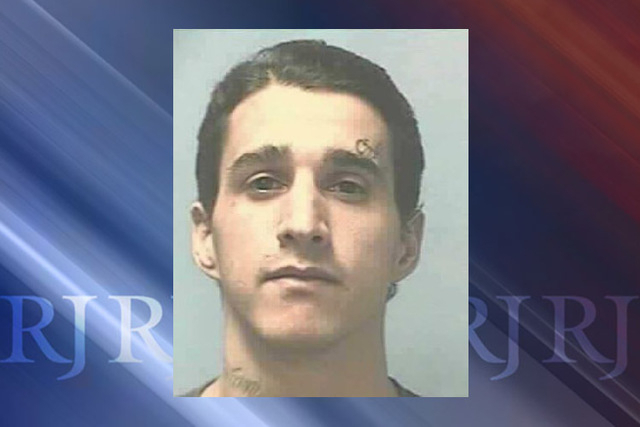Shootings not rare at High Desert State Prison
Carlos Manuel Perez Jr. might well be the only known inmate to be shot and killed by guards while handcuffed at the High Desert State Prison.
But corrections officers firing shotguns isn’t rare at the prison near Indian Springs, data show. Perez’s death, combined with lawsuits and statistics, are fueling calls for scrutiny of Nevada’s use of force from attorneys who represent inmates, from their families and from state lawmakers.
Perez, 28, died Nov. 12 after being shot by a prison guard while handcuffed with four months left on his sentence for a battery conviction. He had been fighting with inmate Andrew Arevalo, 24, who was shot three times in the face and survived. Both were handcuffed behind their backs.
Nevada Department of Corrections data show that guards fired 215 gunshots at High Desert from 2007 through 2011.
That’s 35.5 percent of all use-of- force cases at the prison, including other methods of controlling inmates, according to the data. Firing shots is the second-most common use of force listed at High Desert. It’s second only to guards engaged in hands-on force with inmates.
In comparison, other listed use-of-force methods such as body shields, batons, chemical agents or a show of force were rarely used at High Desert, according to the data.
The prison’s use of firepower accounts for 63 percent of all 339 gunshots fired from 2007 to 2011 in the Nevada corrections system, which has 21 facilities, including camps and prisons. With a capacity of 4,176 inmates, High Desert is Nevada’s largest prison.
“The system seems to be broken entirely and at this point is not in any type of transparent mode,” said attorney Cal Potter, whose firm is handling seven lawsuits that involve shootings in the state prison system. In one case, an inmate lost sight in one eye after being caught in the crossfire of a shooting aimed at other inmates in a prison cafeteria, according to the allegations.
In the Perez case, the Corrections Department sent a news release about his death in November without disclosing that he was shot. That didn’t come until March, when another agency, the Clark County coroner’s office, released the cause of death.
“Carlos Perez’s death is a testament to the excessive force used in these situations,” Potter said Wednesday. Potter is representing Perez’s family in a wrongful death lawsuit.
Corrections officials didn’t respond to a request for comment about the data or the lawsuits.
The Nevada attorney general’s office is reviewing a Nevada Division of Investigation’s probe of the shooting death.
Sen. Tick Segerblom, D-Las Vegas, who obtained the data, said the numbers appear high, adding that a deeper look at the issue is needed. That scrutiny should include historical trends and comparisons to other states so the state has a full picture of the situation, he said.
“It shows there’s been what I would say quite a few, but it’s tough to really appreciate what that means,” Segerblom said.
Potter has a long history of litigating cases against the state’s prison system. In the 1980s, he handled a case for an inmate who lost a leg in a prison shooting.
Perez’s case has emboldened others to come forward with stories, Potter said.
“There’s people coming out of the woodwork, talking about their loved ones being shot,” Potter said.
He didn’t rule out the possibility of a class-action lawsuit.
“We believe that there’s got to be hundreds of people shot at High Desert,” Potter said.
Potter is representing four inmates who have filed separate lawsuits stemming from a January 2012 shotgun incident.
Details in the inmate’s stories of being shot go beyond simply being shot. Pellets are left in inmates’ skin unless they personally dig them out, Potter said.
Data pointing to a heavy reliance on gunshots for use of force appear to back up Potter’s assertion: That the prison guards don’t readily look to other tools besides their shotguns.
Of Perez’s death, Potter said, “We don’t have much faith in the state of Nevada for letting this go on for all of these months. This death occurred in November and they still haven’t released anything.”
Alexis Plunkett, the attorney for Arevalo, said it will take about 60 days for her client to exhaust administrative remedies before an excessive force lawsuit can be filed.
She plans to have the complaint ready to file as early as mid-June.
She said it appears as though excessive force and deadly force are applied “far too often” in Nevada prisons, and High Desert State Prison specifically.
“There is absolutely no justification whatsoever for shooting two handcuffed inmates repeatedly in the face with a shotgun when they were not a threat to any CO’s, not a threat to any other inmates, and essentially posed no real threat to each other,” Plunkett said in an emailed statement.
Travis Barrick, an attorney who represents an inmate suing the state because of another High Desert shooting, said the Nevada Department of Corrections lacks transparency.
“The problem is in my view the lack of accountability within NDOC because it is an opaque institution,” Barrick said. “The only real gauge that anybody has on the amount of claims that are made are the filings in the federal court and an inmate has to exhaust his grievance procedures to file in federal court.”


















